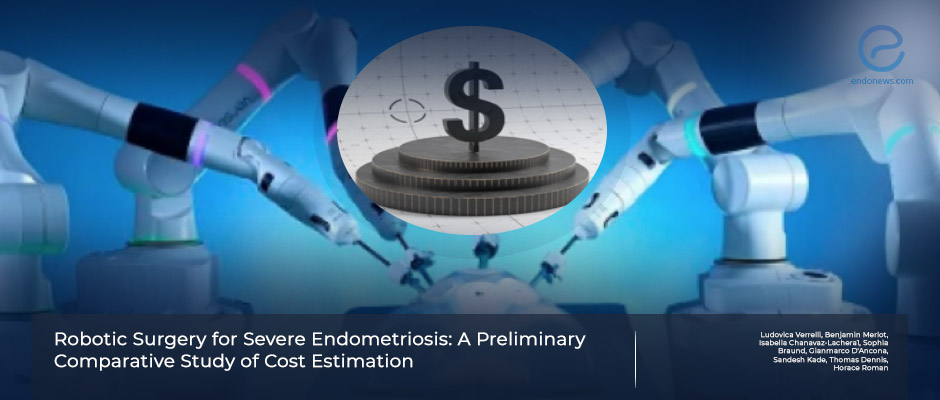Robotic Surgery For Endometriosis
Jan 4, 2024
Robotic surgery for the treatment of severe endometriosis is feasible, but is associated with higher costs, new study says.
Key Points
Highlights:
- Robotic surgery is feasible for the treatment of severe endometriosis.
- Robotic surgery is associated with higher costs compared to conventional laparoscopy.
Importance:
- These findings highlight the importance of identifying specific indications for the use of robotic surgery.
What’s done here:
- Researchers conducted a comparative study on 175 patients with severe endometriosis who underwent surgery.
Key results:
- The operation time and operating theater occupancy of patients undergoing robotic surgery were statistically significantly longer than patients who had conventional laparoscopy.
- There were no differences between the two approaches in terms of mean hospital stay time, postoperative complications, rehospitalization, and second surgery.
- The cost of robotic surgery was higher than conventional laparoscopic surgery when colorectal resection and rectal disc excision were compared.
Limitations:
This is a single-center study in a relatively small number of patients and more research is needed to confirm these findings.
Lay Summary
Robotic surgery is an option for the treatment of severe endometriosis, according to the results of a preliminary comparative study published in the Journal of Minimally Invasive Gynecology. However, the approach is associated with higher costs.
“Next studies should identify specific indications for robotic surgery”, the authors of the study wrote, “where technical advantages provided by the technology are followed by objective improvement of patients' outcomes”.
In order to compare the postoperative outcomes and the overall expenses between conventional laparoscopy and robotic surgery, a team of researchers led by Dr. Horace Roman conducted a comparative study on 175 patients with severe endometriosis who underwent surgery between March 2021 and August 2022. The surgeries included rectal shaving, discoid resection or segmental resection, sacral plexus surgery, and surgery involving the diaphragm.
The team compared the total time of surgery (both operating time and room occupancy time), time of hospitalization, complications following the operation, rehospitalization, and second surgery between patients who had conventional laparoscopy and those who had robotic-assisted surgery.
The results showed that patients who had robotic-assisted surgery had statistically longer operating theater occupancy as well as longer operation time compared to those who had conventional laparoscopic surgery. There were no differences in mean hospital stay time, postoperative complications, rehospitalization, and second surgery between the two groups of patients.
The researchers also compared the cost of the two approaches and reported that the cost of colorectal resection was 2,604 euros for conventional laparoscopic surgery compared to 2,957 euros for robotic surgery. The cost of rectal disc excision was 1,527 euros for conventional laparoscopy compared to 1,905.85 euros for robotic-assisted surgery.
“Our study confirms the feasibility of the robotic approach for the treatment of severe endometriosis, with however a higher cost of robotic approach,” the researchers concluded.
Research Source: https://pubmed.ncbi.nlm.nih.gov/37935331/
robotic surgery laparocopy severe endometriosis

